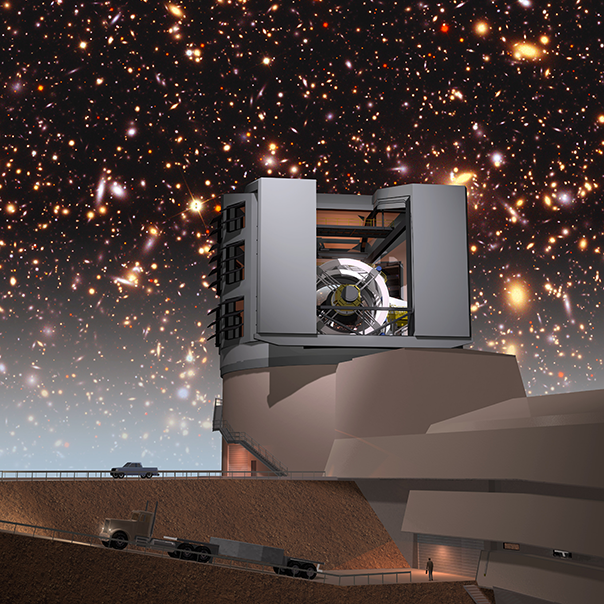Teledyne e2v, a Teledyne Technologies [NYSE: TDY] company, has completed a multi-million dollar project by delivering hundreds of CCD250 sensors for one of the world’s most powerful survey telescopes: the Large Synoptic Survey Telescope (LSST). Identified as a US national scientific priority by the 2010 USA National Research Council decadal survey, LSST will carry out a 10-year survey of 37 billion stars and galaxies to produce a giant database of the sky.
Equipped with the greatest data capture capability, the LSST incorporates the largest digital camera ever built for ground-based astronomy. When commissioned in 2021, it will be one of the world’s most powerful astronomical survey telescopes. The camera, using 4096 by 4004 pixel format CCD sensors, has the ability to capture 3.2 gigapixels of image data and produce 1000 images every night.
Teledyne e2v’s CCD sensors have been uniquely designed and manufactured to achieve the performance and delivery time required for this project. The 16 megapixel sensors have been manufactured in a custom 4-side butting precision package that enables a closely packed mosaic assembly providing a high fill factor.
As the camera requires an extremely flat focal surface, Teledyne e2v has designed each of the individual sensors to achieve a surface flatness precision that is one-twentieth of the width of a human hair. The sensors deliver high sensitivity over a wide wavelength range. Spectral response ranges from UV to NIR at an enhanced infrared sensitivity of 80% QE at 900 nm. The sensors have 16 output channels that enable 2-second readout with low read-noise, allowing for a high rate of high-resolution image collection.
CCD250 Image Sensor for Large Synoptic Survey Telescope (LSST)
Dr. Paul Jorden, Astronomy product specialist at Teledyne e2v, said, “We are thrilled to have partnered with SLAC National Accelerator Laboratory in the USA to deliver what are among the world’s most powerful image sensors, tuned to a level of performance and exacting standards we are so pleased to have achieved. We anticipate superb results of this very important ground-based astronomy system.”
According to Steve Kahn, LSST Director, “During its ten-year survey, LSST will capture images of billions of never-before-seen astronomical objects, generating unprecedented amounts of data and helping to answer some of the universe’s biggest questions. The benefits produced by LSST will extend far beyond the astronomy community.”
Employing the most sensitive and highest precision collection of sensors in its camera, LSST seeks to answer fundamental astronomy questions about dark matter, dark energy, near-Earth asteroids, transient optical objects (such as supernovae), and the formation of our Milky Way galaxy.























